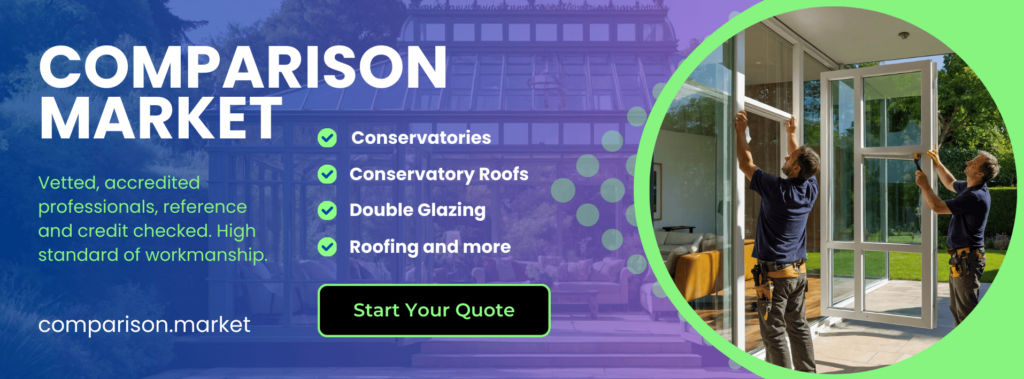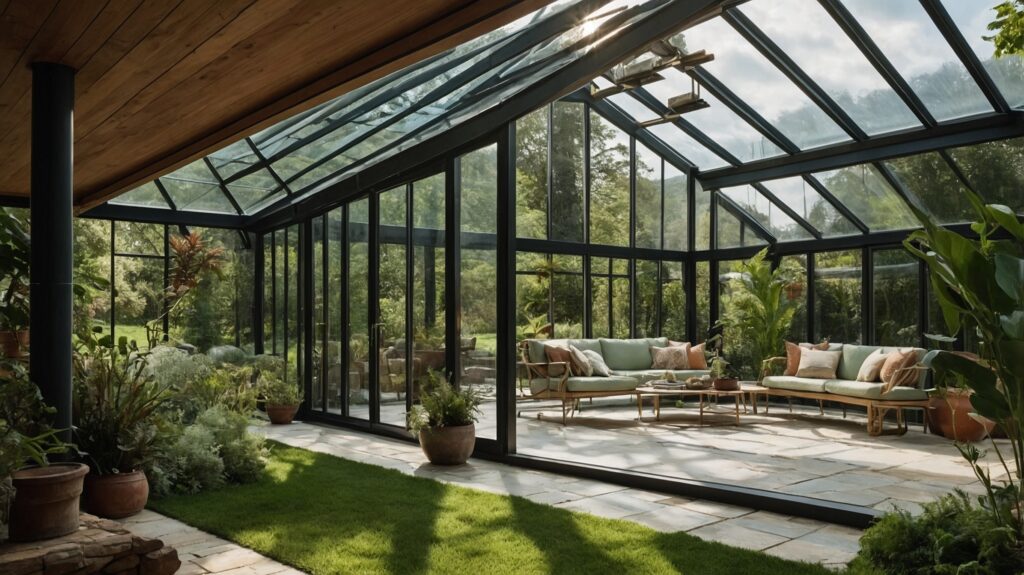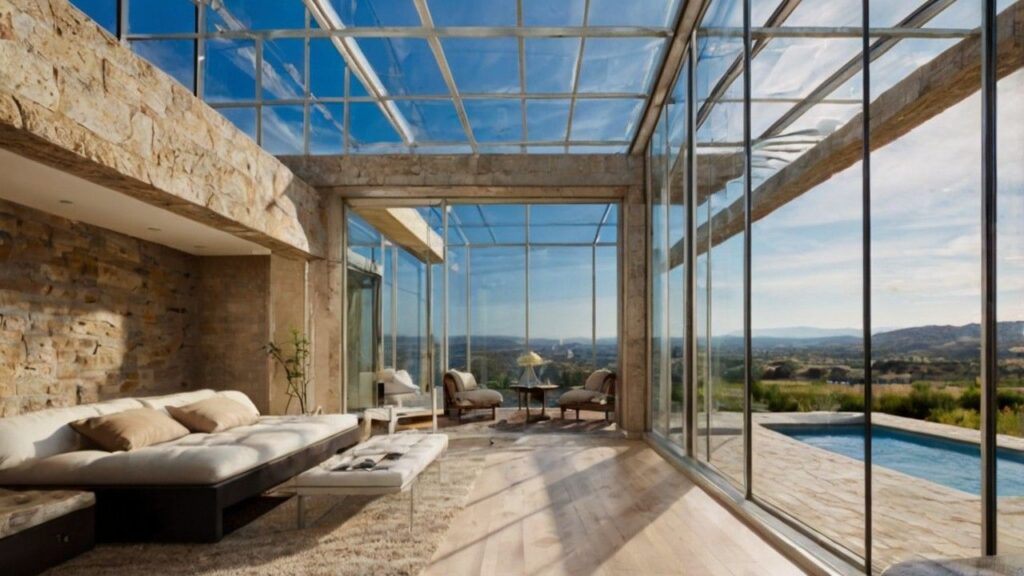UK’s Top 5 Conservatory Roofs: Materials, Costs, And Lifestyle Benefits
Conservatories have long been a beloved feature of British homes, these versatile spaces bridge the gap between indoor comfort and outdoor beauty, offering a unique way to expand your living area and connect with nature. But not all conservatories are created equal – the roof material you choose can make or break your conservatory experience. In this article, we’ll dive deep into five conservatory roof materials, comparing their costs, benefits, and popularity in the UK.
Choosing the right conservatory roof is a significant decision that can dramatically impact your home’s comfort, efficiency, and value. From the budget-friendly polycarbonate to the premium solid roof options, each material offers unique benefits tailored to different needs and preferences. The growing popularity of tiled and solid roofs reflects a shift towards creating more permanent, versatile living spaces, while the enduring appeal of glass roofs speaks to our desire for light-filled, nature-connected areas.
Choosing the right conservatory roof is crucial
Conservatory roof plays a significant role in determining how comfortable and usable the space will be throughout the year, directly impacting many lifestyle advantages. For instance, a well-insulated roof ensures year-round comfort, while a roof that allows ample natural light supports the mood-boosting and plant-nurturing benefits of a conservatory.
Conservatory roof by Popularity: This order reflects the general trend in the UK
We sorted the conservatory roof types for you in ascending order of popularity in the UK, starting with the most popular. Please note that popularity can fluctuate over time and may vary slightly depending on specific regions or demographics. However, based on current trends and market information, here’s a general ranking:
1. Glass Roofs
Glass roofs remain the most popular choice in the UK due to their classic appearance, ability to maximize natural light, and the seamless connection they create with the outdoors. They offer a good balance between cost and benefits, which contributes to their widespread appeal.
2. Tiled Roofs
Tiled roofs have seen a significant surge in popularity in recent years. They offer excellent insulation, noise reduction, and give conservatories a more permanent, extension-like feel. Their ability to transform conservatories into year-round usable spaces has greatly contributed to their rising popularity.
3. Solid Roofs
Solid roofs are growing in popularity, especially among homeowners looking to create a more versatile, year-round living space. They offer superior insulation and energy efficiency, making them an increasingly popular choice for those prioritizing comfort and reduced energy costs.
4. Polycarbonate Roofs
While not as popular as they once were, polycarbonate roofs still maintain a significant market share due to their affordability and ease of installation. They remain a popular choice for budget-conscious homeowners or those who use their conservatories primarily in milder weather.
5. Lantern Roofs
Lantern roofs are gaining traction, particularly in high-end properties and larger conservatories. While they’re not as common as the other options, their unique aesthetic appeal and ability to create a sense of height and space are making them increasingly popular, especially in certain market segments.
This order reflects the general trend in the UK market, with glass roofs maintaining their top position due to their versatility and classic appeal. Followed by the rising popularity of tiled and solid roofs as homeowners seek more permanent, energy-efficient solutions. Polycarbonate roofs, while less popular than before, still hold a significant place due to their cost-effectiveness. Lantern roofs, while growing in popularity, are still considered a more specialized option.
1. Glass Conservatory Roofs
Glass roofs are a timeless classic in the world of conservatories, offering unparalleled natural light and a sense of openness that many homeowners crave.
Materials: Double or triple-glazed glass panels:
uPVC, aluminium, or timber frames
Cost: Glass roofs typically fall in the mid-range of conservatory roof options. Expect to pay between £2,500 to £3,500 for a standard-sized conservatory. However, prices can vary based on the quality of glass and frame materials used.
Lifestyle Benefits: Maximizes natural light, creating a bright and airy space
Offers clear views of the sky and surrounding landscape
Can be fitted with solar control glass to regulate temperature
Popularity: Glass roofs remain one of the most popular choices in the UK due to their classic appearance and ability to create a seamless connection with the outdoors.
2. Tiled Conservatory Roofs
Tiled roofs have gained significant popularity in recent years, offering a more traditional look and improved insulation.
Materials: Lightweight tiles (often made from coated steel or composite materials)
Insulation layers
Plastered internal ceiling
Cost: Tiled roofs are generally more expensive, with prices ranging from £4,000 to £7,000 for an average conservatory. However, they can significantly increase the value of your property.
Lifestyle Benefits: Excellent insulation, making the conservatory usable year-round
Reduces noise from rain and hail
Gives the conservatory a more permanent, extension-like feel
Popularity: Tiled roofs have seen a surge in popularity, especially among homeowners looking to transform their conservatory into a more integral part of their home.
3. Solid Roof Conservatories
Solid roof conservatories blur the line between a traditional conservatory and a full house extension, offering superior insulation and a more permanent feel.
Materials: Tiles or slate (real or synthetic)
Insulation layers
Timber or steel framework
Plastered internal ceiling
Cost: Solid roofs are typically the most expensive option, with prices ranging from £5,000 to £8,000 or more, depending on size and materials.
Lifestyle Benefits: Excellent thermal efficiency, reducing energy bills
Creates a room that feels like a seamless part of the house
Allows for the installation of roof windows or skylights
Popularity: Solid roof conservatories have gained significant traction in recent years, particularly among homeowners looking to create a more versatile, year-round living space.
4. Polycarbonate Conservatory Roofs
Polycarbonate roofs are known for their affordability and lightweight nature, making them a popular choice for budget-conscious homeowners.
Materials: Multiwall polycarbonate sheets
uPVC or aluminium frames
Cost: Polycarbonate roofs are the most budget-friendly option, with prices ranging from £1,500 to £2,500 for an average-sized conservatory.
Lifestyle Benefits: Cost-effective solution for extending living space
Lightweight and easy to install
Available in various tints to control light and heat
Popularity: While not as popular as they once were, polycarbonate roofs still maintain a significant market share due to their affordability and ease of installation.
5. Lantern Roofs
Lantern roofs add a touch of elegance and architectural interest to conservatories, creating a stunning focal point.
Materials: Double or triple-glazed glass panels
uPVC or aluminium frames
Optional roof vents
Cost: Lantern roofs are a premium option, with prices typically ranging from £3,500 to £5,500, depending on size and materials used.
Lifestyle Benefits: Creates a sense of height and space
Allows for creative lighting options
Can incorporate opening vents for improved ventilation
Popularity: While not as common as some other options, lantern roofs are growing in popularity, especially in high-end homes and larger conservatories.
5. Solid Roof Conservatories
By carefully considering your needs, budget, and the unique characteristics of each style, you can make an informed decision that will bring joy and value to your home for years to come. Remember, the cheapest option isn’t always about the initial cost – factor in long-term efficiency, maintenance, and potential increase in property value when making your choice.
Popularity: While not as common as some other options, lantern roofs are growing in popularity, especially in high-end homes and larger conservatories.
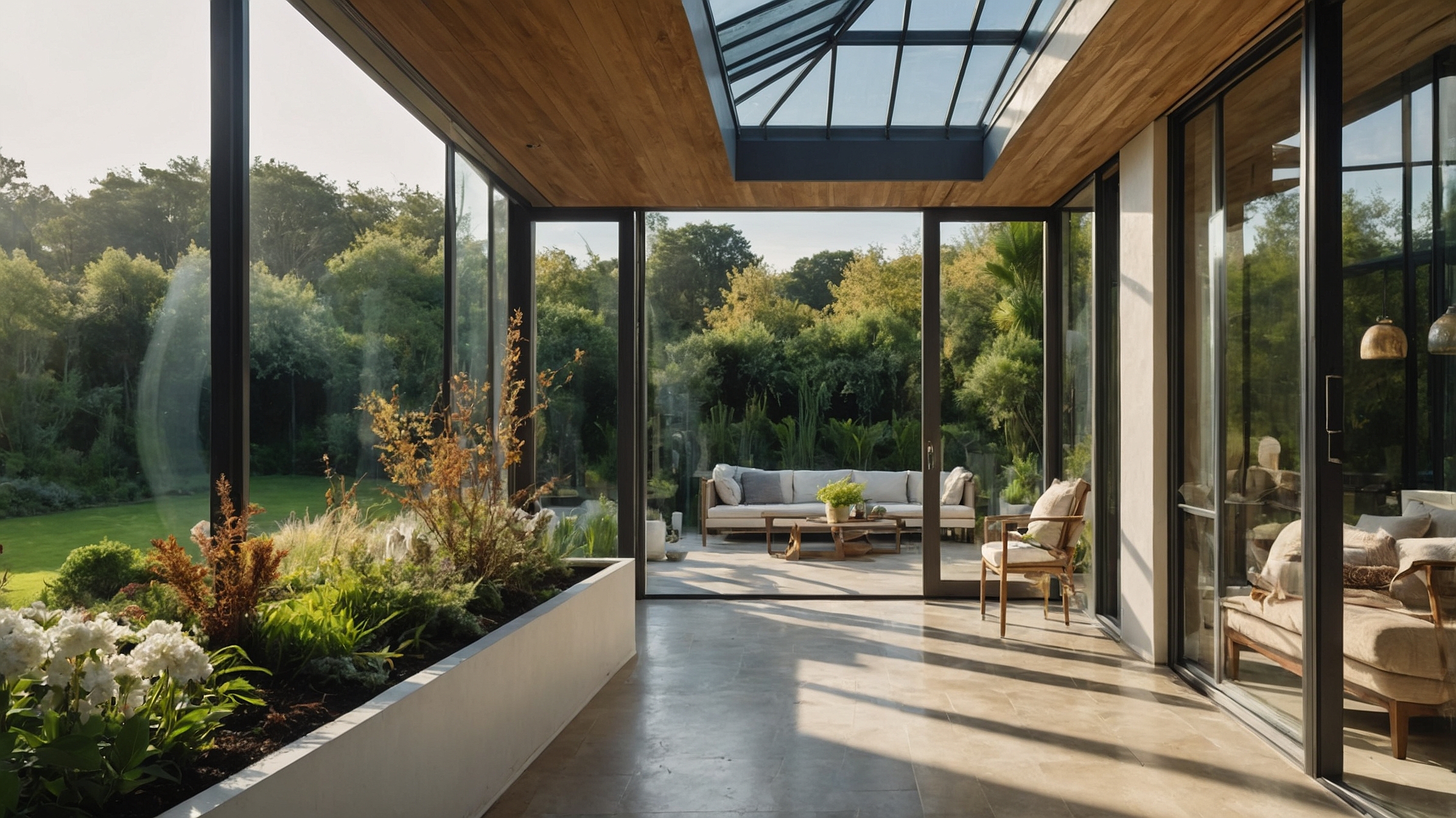
Cheapest Conservatory Roof Options
When it comes to conservatory roofs, several affordable options are available:
- Polycarbonate: This is the cheapest roofing material for conservatories. It’s lightweight, easy to install, and provides good insulation. However, it’s less durable than glass and can be noisy during rain.
- Standard glass: More expensive than polycarbonate but still affordable, standard glass offers better aesthetics and durability.
- uPVC panels: These can be a cost-effective alternative to glass, offering good insulation and easy maintenance.
The polycarbonate roof is typically the cheapest option due to its low material cost and ease of installation. However, it’s essential to consider long-term energy efficiency and durability when making your decision.
Comparison of Costs and Materials:
Cheapest Option: Polycarbonate Roofs
Polycarbonate roofs remain the most affordable choice, making them ideal for those on a tight budget. The materials are inexpensive and lightweight, which also reduces installation costs. However, they offer less insulation and have a shorter lifespan compared to other options.
Mid-Range Option: Glass Roofs
Glass roofs offer a good balance between cost and benefits. Modern double or triple-glazed units provide better insulation than polycarbonate, and their durability justifies the higher price point.
Premium Options: Tiled, Lantern, and Solid Roofs
These options come with a higher price tag but offer superior insulation, durability, and aesthetic appeal. They can significantly enhance your home’s value and transform your conservatory into a versatile, year-round living space.
Enhancing Lifestyle:
- Year-Round Use: Tiled and solid roofs excel in creating spaces that can be comfortably used throughout the year, thanks to their superior insulation properties.
- Natural Light: Glass roofs and lantern roofs are unbeatable when it comes to maximizing natural light, creating bright, uplifting spaces.
- Aesthetic Appeal: Lantern roofs add architectural interest, while tiled and solid roofs can seamlessly blend with your home’s existing structure.
- Energy Efficiency: Solid and tiled roofs offer the best energy efficiency, potentially reducing your heating and cooling costs.
- Noise Reduction: Tiled and solid roofs provide excellent sound insulation, creating a quieter, more peaceful environment.
Construction Speed and Timelines:
Glass Roofs: Construction Time: Typically 3-5 days
Glass roofs are relatively quick to install due to their modular nature. The frames can be prepared off-site, which speeds up on-site installation. Factors affecting timeline: Size of the conservatory. Complexity of the design. Weather conditions during installation.
Tiled Roofs: Construction Time: Usually 7-10 days
Tiled roofs take longer to install than glass roofs due to the additional layers involved. Timeline includes: Removing old roof (if replacing). Installing new frame and insulation. Laying tiles. Plastering the interior ceiling.
Solid Roofs: Construction Time: Approximately 1-2 weeks
Solid roofs generally take the longest to install due to their complex structure. The process involves: Structural calculations and planning. Removing existing roof. Installing new framework. Adding insulation layers. Fitting exterior roofing material. Plastering and finishing interior
Polycarbonate Roofs: Construction Time: 2-4 days
Polycarbonate roofs are the quickest to install due to their lightweight nature and simple design. Factors affecting speed: Size of conservatory. Complexity of frame design. Weather conditions
Lantern Roofs: Construction Time: 5-7 days
Lantern roofs take a bit longer than standard glass roofs due to their more complex structure. Installation process includes: Preparing the opening in the roof Installing the lantern frame. Fitting glass panels. Ensuring proper sealing and insulation
General Considerations:
- Preparation Time: Before installation begins, there’s often a lead time of 2-4 weeks for manufacturing and delivery of materials.
- Weather Dependency: All roof installations are weather-dependent. Poor weather conditions can extend timelines.
- Permissions: If planning permission is required, this can add several weeks to the overall project timeline before construction can begin.
- Complexity: More complex designs or larger conservatories will naturally take longer to complete.
- Retrofitting vs New Build: Replacing an existing roof often takes longer than installing a roof on a new conservatory due to the need for careful removal of the old structure.
- Finishing Touches: The timelines above typically refer to the main construction. Additional time may be needed for finishing touches like painting, electrical work, or flooring.
- Professional vs DIY: These timelines assume professional installation. DIY projects may take significantly longer, especially for more complex roof types.
- Season: Installation during peak summer months might involve longer wait times due to high demand.
Remember, these are average timelines. Your specific project may vary depending on individual circumstances, the chosen installer, and any unforeseen complications. It’s always best to discuss specific timelines with your chosen conservatory specialist.
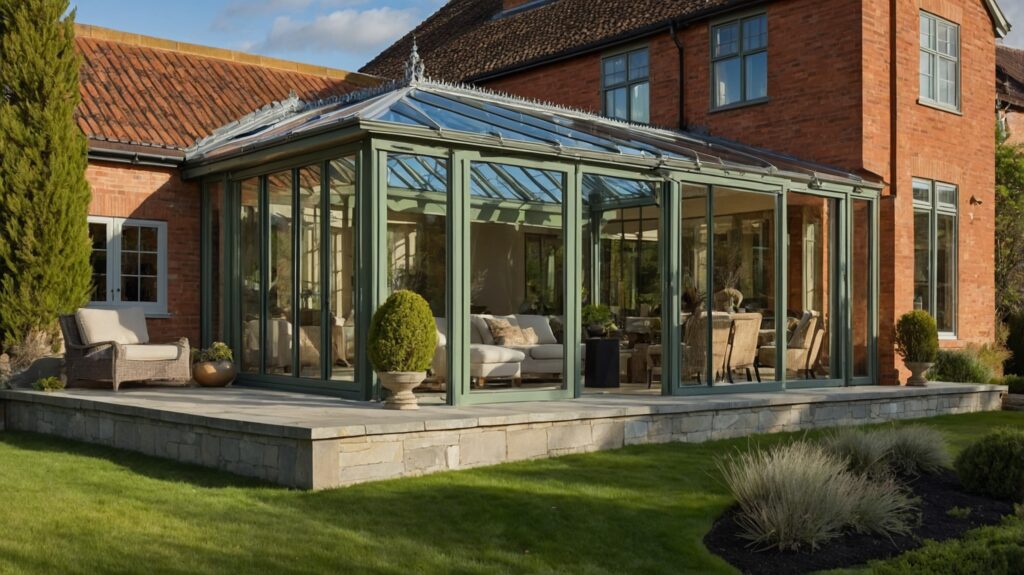
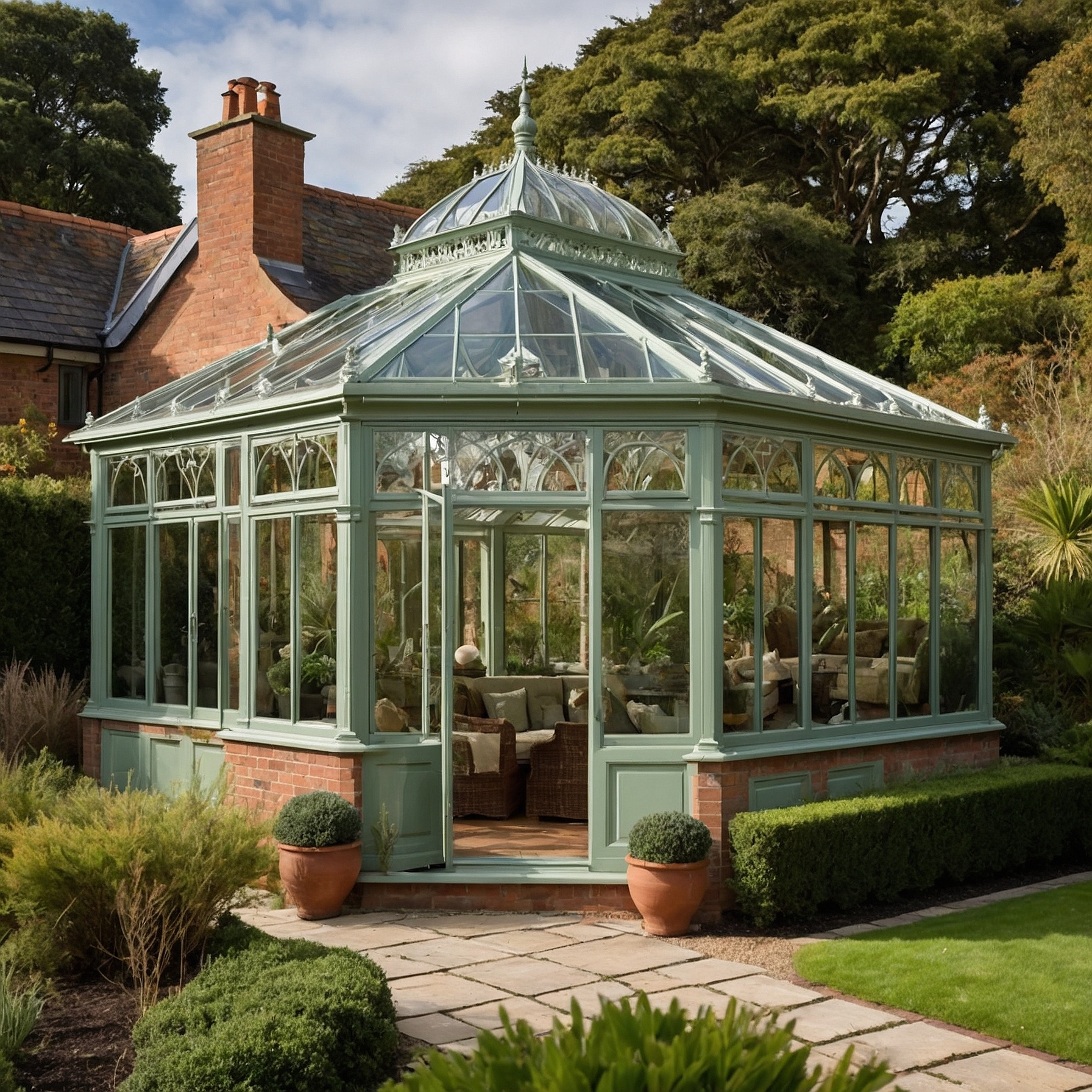
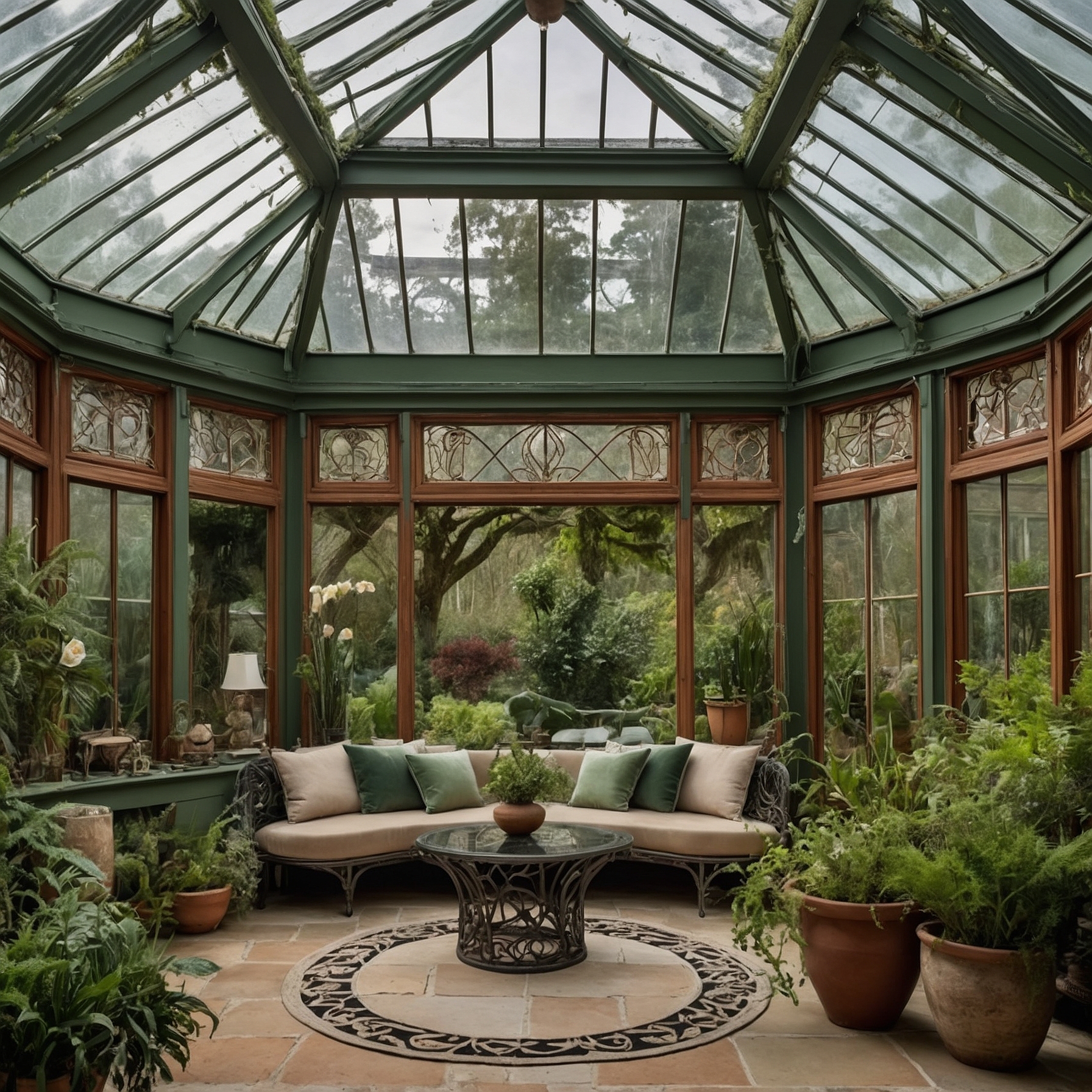
Choosing the Cheapest Conservatory: Tips and Tricks
By choosing materials wisely, exploring DIY possibilities, and timing your project strategically, you can further reduce costs without compromising on quality. Whether you opt for the straightforward lean-to or the elegant Victorian style, both can significantly enhance your living space and lifestyle.
- Compare quotes: Get at least two quotes from different fitters to ensure you’re getting the best deal.
- Consider DIY: DIY conservatory kit can save you significant money on installation costs.
- Opt for standard sizes: Custom sizes will increase costs, so stick to standard dimensions if possible.
- Choose uPVC: This material offers the best balance of affordability, durability, and low maintenance.
- Keep it simple: Avoid complex designs or additional features that can drive up costs.
- Time it right: Some companies offer discounts during slower seasons, typically winter months.
- Look for package deals: Some suppliers offer complete packages including base work and installation, which can be more cost-effective.
- Consider second-hand: While less common, you might find a used conservatory in good condition at a fraction of the cost of a new one.
- Plan for the long-term: Investing in better roof insulation or double glazing might cost more upfront but save money on energy bills in the long run.
- Check planning permissions: Make sure to check planning permission to ensure your conservatory complies with local regulations to avoid costly alterations later.
When deciding between these two affordable options, consider not just the initial costs, but also long-term factors such as energy efficiency, maintenance, and potential impact on your property’s value. Remember that the cheapest option upfront may not always be the most economical in the long run.
Ultimately, the best choice depends on your specific needs, budget constraints, and personal preferences. With careful planning and consideration, you can create a beautiful, functional conservatory that not only fits your budget but also adds a new dimension to your home.
Conclusion: As we’ve explored the UK’s top 5 conservatory roof materials, it’s clear that each option has its own strengths and considerations. Whether you prioritize natural light, energy efficiency, cost-effectiveness, or architectural appeal, there’s a conservatory roof solution to match your needs. The growing popularity of tiled and solid roofs reflects a shift towards creating more permanent, versatile living spaces. While the enduring appeal of glass roofs speaks to our desire for light-filled, nature-connected areas.
Which roof material is best for maximizing natural light?
Glass roofs and lantern roofs are the best options for maximizing natural light in your conservatory.
Can I install roof windows in a solid or tiled conservatory roof?
Yes, roof windows or skylights can be incorporated into solid or tiled conservatory roofs, allowing you to enjoy natural light while benefiting from improved insulation.
Which roof material is best for maintaining a comfortable temperature?
Tiled and solid roofs offer the best temperature control due to their insulation properties, making them ideal for year-round use.
How long do conservatory roofs typically last?
The lifespan varies by material. Polycarbonate roofs last 10-15 years, glass roofs 20-30 years, and tiled or solid roofs can last 50+ years with proper maintenance.
Can I replace my existing conservatory roof with a different material?
Yes, in most cases, you can replace your existing roof with a different material. However, you may need to check if your conservatory structure can support the new roof and if you need planning permission.
Which conservatory roof material is the most energy-efficient?
Solid and tiled conservatory roofs are typically the most energy-efficient options due to their superior insulation properties.
Can a lantern roof be installed on an existing conservatory?
Yes, lantern roofs can often be installed on existing conservatories, but the structure may need reinforcement to support the additional weight.
Are polycarbonate roofs still a good option?
Polycarbonate roofs remain a good budget-friendly option, especially for those who primarily use their conservatory in milder weather. However, they offer less insulation and durability compared to other materials.
Thoroughly Vetted Professionals
Every supplier in our network goes through a strict vetting process, including credit checks and accreditation verification.
Simply Fill in Your Details, and Receive Competitive Quotes from Accredited Companies Tailored to Your Project!
Our team brings almost two decades of expertise in the UK home improvements sector, giving you unique insights into its challenges and possibilities. Reaching out to us means tapping into a wealth of experience from home improvements experts who know the British market inside out.
All our suppliers are members of one or more consumer protection groups below.

We offer unparalleled market insights, a network of skilled professionals vetted, accredited and reference – credit checked who can handle projects of all sizes. Our knowledgeable UK-based team will ensure a smooth, informed experience from start to finish.
To send us your marketing and other service offers, please use the following email: offers@comparison.market
